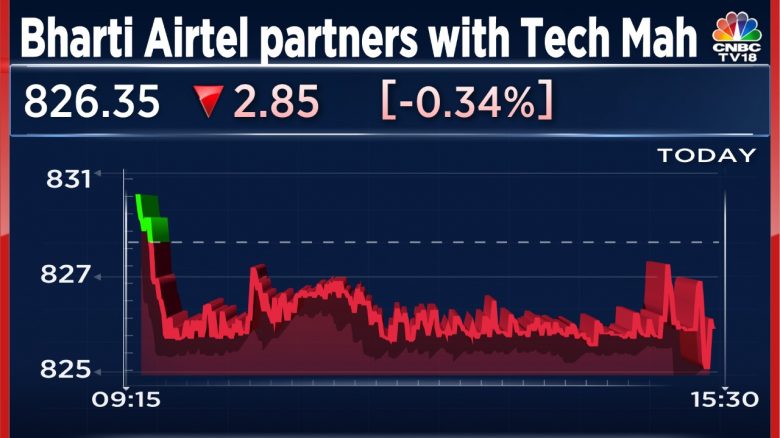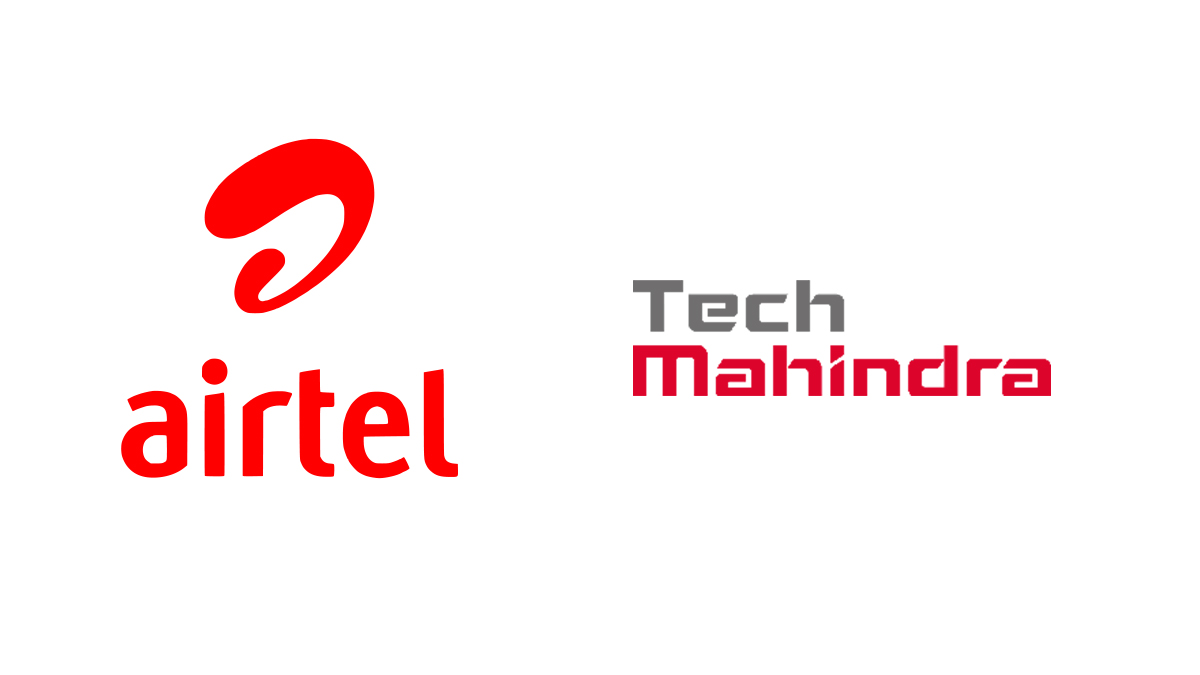[ad_1]
Bharti Airtel and Tech Mahindra own India’s first 5G-capable car manufacturing facility. What’s the difference?
The “captive private network” will be installed at Mahindra & Mahindra’s Chakan facility in Maharashtra. What benefits will 5G bring to the automotive industry? We give an explanation.
Bharti Airtel has partnered with Tech Mahindra to install a ‘private network’ at Mahindra & Mahindra’s Chakan facility in Maharashtra. The two claim that their collaboration will result in India’s first 5G-enabled car manufacturing facility.
Airtel’s actions have surprised industry analysts as they show the potential level of collaboration between telcos and other businesses for 5G use cases. Analysts believe that Airtel has an advantage over the Adani Group because, unlike the Adani Group, it has bought spectrum specifically for these services.
A personal 5G network consists of:
A captive non-public network (CNPN), also known as a private 5G network, is a network that is dedicated only to one company. Unlike the public network, it is not open to external communication. Because it uses high-frequency, low-wavelength waves, the network is ideal for institutions such as factories, manufacturing plants, hospitals and universities.
Given that consumer adoption of 5G may take time and may not generate as much revenue due to typically low tariff rates in India, private 5G networks will generate a significant portion of revenue for businesses deploying them, according to industry analysts.
What is the purpose of the action?
Through the partnership, which bought spectrum during an auction earlier this year with the specific aim of deploying private 5G networks, Airtel may have overtaken the Adani group for now. The Adani Group spent a total of Rs 212 crore during the auction to purchase 400 MHz of spectrum in the 26 GHz band through its subsidiary Adani Data Network.
The conglomerate has insisted that it is not bidding for consumer spectrum, but rather to create its own private network, which will be used for various manufacturing operations as well as business verticals such as ports, airports and logistics. Although not announced to that effect, the group did not rule out the possibility of developing private 5G networks for other companies.
According to sources who previously spoke to The Indian Express, Airtel, which opted for a non-standalone architecture for its 5G services, was also ready with a stand-alone setup for private network use cases. With relatively little investment, operators can make the most of their current network infrastructure in a non-standalone architecture.
In August, the government invited interested parties to participate in the development of a study on the demand for the direct allocation of spectrum for the construction of private 5G networks. However, the Airtel-Tech Mahindra partnership shows the potential for such collaboration between telcos and private enterprises. Analysts predicted that most companies would wait for a direct allocation of spectrum before setting up such networks.

How will the private 5G network of the factory in Čakan function?
Airtel claims that by allowing managers to run multiple software flashing sessions simultaneously, the network will speed up software flashing, a critical process for all vehicle shipments, and reduce operational time. Fully automated computerized vision-based inspection will result in better paint quality.
After much anticipation, India will finally have 5G coverage this year, with major telecom operators planning to gradually roll out the network across the country in the coming months. Along with this new technology comes a bunch of new terminology, potentially making it harder for people to learn more. This guide defines and explains various 5G terms.
4G
Before moving on to 5G, it might be wise to talk about 4G, the previous technology. With the introduction of 4G networks, data transfer speeds have become even more critical. 4G technology has influenced both the growth of the application economy and the way people access the Internet.
5G
In some ways, 5G technology is similar to 4G technology on steroids. However, it will also enable a number of new use cases, such as connected autonomous vehicles and cloud gaming, as well as much faster internet connectivity.
Latency
Despite the emphasis on 5G speed, latency will be a major factor in many of the new technologies that support 5G. The time elapsed between the request being made and when the transfer actually begins is called the data transfer delay. This could be the time it takes between clicking on a link and the network sending you the data it contains, for example.
According to TechTarget, the latency of 4G networks ranges from 60 to 98 milliseconds. Due to 5G technology, this should take less than 5 milliseconds, and possibly less than 1 millisecond.
5G spectrum
“Spectrum” refers to radio frequency bands allocated to various telecom companies and industries. Consider how you can listen to different frequencies on the radio.
Unlike a radio, the carrier of your phone determines which spectrum it will automatically “tune” to. When a larger frequency spectrum is used, faster data connections are possible in exchange for a shorter range. The lower frequency spectrum sacrifices speed in exchange for greater range.

5G uses wavelength (mmWave)
The ultra high frequency range for 5G is the mmWave or mmV spectrum. It usually ranges between 24 and 100 gigahertz. When talking about ultra-fast broadband access, mmWave is often mentioned.
As one might expect, the extremely high speeds of the mmWave are sacrificed for a very limited range. It is challenging to establish a stable connection with mmWave technology due to its well-known instability and susceptibility to interference. In terms of actual use, mmWave technology is currently more comparable to WiFi than cellular networks.
Low-band spectra, as the name suggests, have low frequencies. The low frequency bands power the currently operational 3G and 4G networks in the country. These low frequency spectrums are extremely useful because of their ability to transmit over much longer distances without much interference. However, they can only move at a slower speed.
Medium range
The mid-range frequency spectrum exists between mmWave and low-band frequencies. It successfully balances the high speed of mmWave 5G with wide low-band frequency coverage. Lless than 6 gigahertz 5G uses less than 6 gigahertz. The term “5G” refers to 5G frequencies that are less than 6 gigahertz in the low, mid, and high bands. With the exception of mmWave, it applies to all 5G spectrums.
MIMO stands for multiple input, multiple output. Phones that support MIMO can send multiple data signals on the same frequency at the same time. Bandwidth for connecting phones and other devices to the Internet has been increased. 44 A MIMO phone, for example, has four antennas that support four simultaneous data streams.
5G network aggregation
Telecom operators combine different 5G frequency bands to allow 5G-enabled phones to choose the least congested and fastest frequency band. Network aggregation is the term for this.
Fragment your network
According to a device’s connectivity needs, network slicing is the process of reserving specific portions of a given spectrum for that device. A cell tower, on the other hand, can offer a lower range and slower connection to a smart electricity meter inside a building, while also offering a higher power, faster and lower latency 5G connection to an autonomous vehicle transmitting high-definition sensor data.
Technology A strategic partnership between Mahindra and Bharti Airtel was unveiled on Thursday to develop a private 5G network at Mahindra’s Chakan manufacturing facility.
According to the company, Mahindra’s Chakan facility is now India’s first car manufacturing facility with 5G capabilities.
The telecom giant claimed that the “5G for business” solution significantly improved Chakan’s network connectivity and software flashing speed, a critical procedure for all vehicle shipments. Managers can now run multiple software flashing sessions at the same time due to high speeds and extremely low latency, which reduced the operation time.
Moreover, computer vision-based inspection is now fully automated, raising the caliber of paint. Airtel is in charge of implementing the 5G network in India. As part of its #5GforBusiness offering, the company is testing use cases and spectrum delivery in various locations with various partners.

Tech Mahindra’s leading integrated connectivity portfolio #5GforBusiness, industry expertise to provide specialized customer service and 5G solution capabilities for enterprises like Factories, according to Bharti Airtel.
NKST will benefit business users, and at the same time it will speed up the adoption of tr. Tech Mahindra also specializes in the planning, design, implementation and management of enterprise private wireless networks.
According to the telco, this collaboration is in line with Tech Mahindra’s NKST.NOVTM framework, which emphasizes investing in cutting-edge products and services that enable digital transformation, meet changing customer needs and enhance the “Human Centric Experience”.
According to Airtel Business Director and CEO Ajay Chitkar, manufacturing operations in the country will change as a result of our 5G enterprise solution. We are excited to partner with Tech Mahindra and Mahindra Auto to demonstrate this transformation. India’s first 5G-enabled car manufacturing plant is currently the Chakan plant. As the Industry 4.0 paradigm gains traction, reliable data networks will prove to be a key differentiator in factory and manufacturing performance.
According to Manish Vyas, President, Communications, Media & Entertainment and CEO, Network Services at Tech Mahindra, the partnership with Airtel aims to enhance customer experience by leveraging cutting-edge technology-based platforms and solutions. We believe this collaboration will pave the way for increased productivity, intelligent, network-driven enterprise digitization and innovation across industries.
Tech Mahindra focuses on next-generation technologies such as 5G, blockchain, cyber security, artificial intelligence and others to enable end-to-end digital transformation for global clients.
More than 500 million people use Bharti Airtel’s communication services, which are available in 17 countries in South Asia and Africa. On the BSE, shares of Tech Mahindra fell 3.79% to Rs 1,024.65, while shares of Bharti Airtel fell 0.36% to Rs 825.95.
edited and proofread by Nikita Sharma
[ad_2]
Source link

